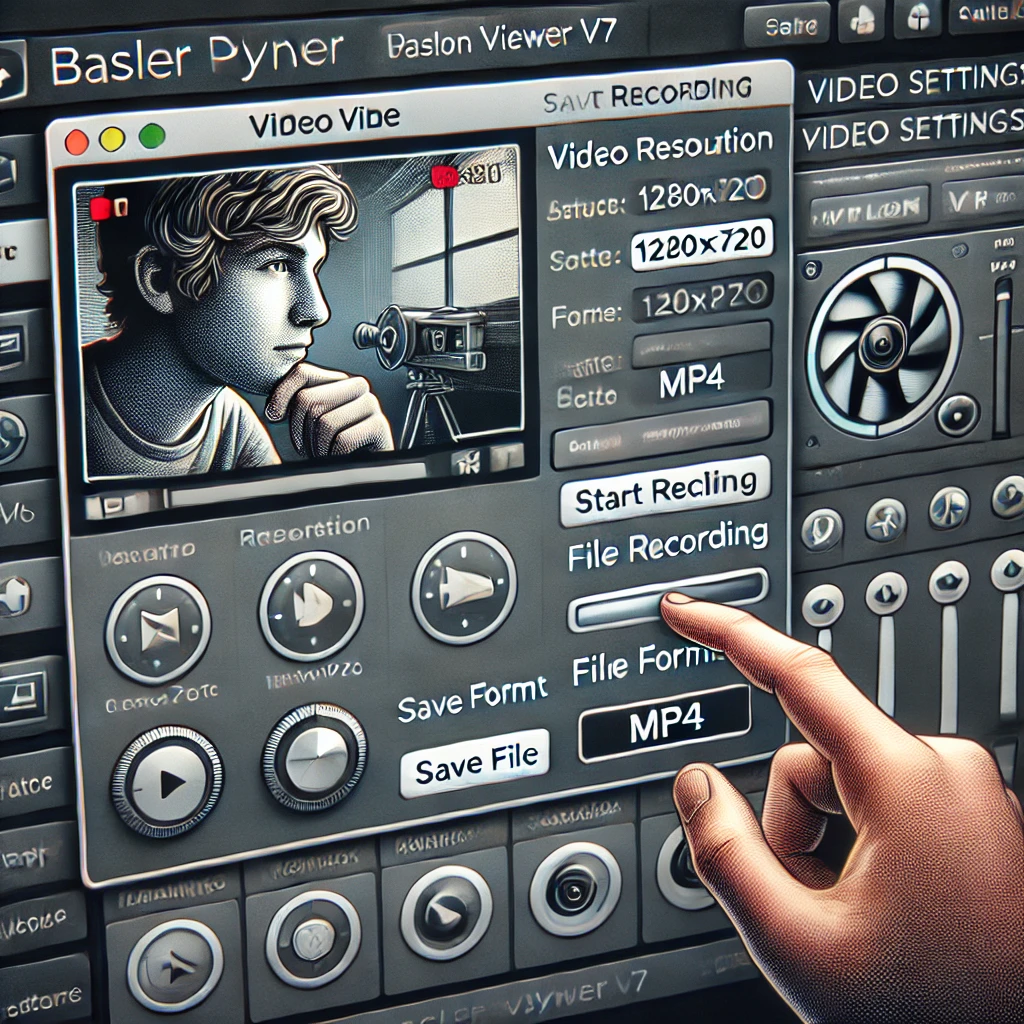Saving Video Files as MP4 in Pylon V7: How to Do It Right
If you’ve ever worked with pylon v7 saving video file as mp4 and found yourself asking, “How can I save my video files as MP4?”, you’re not alone.
This is a common question among users who need their video output in a widely supported format.
The good news is, saving video files as MP4 in pylon v7 saving video file as mp4 is possible, but there are a few important steps to follow to get it right.
In this article, we’ll break down the process in plain English, so you can get your videos in MP4 format without a hitch.
Let’s dive in and figure it out together.
Why Saving as MP4 Matters
First off, let’s talk about pylon v7 saving video file as mp4 is such a big deal.
MP4 is one of the most widely accepted video formats across the globe.
Whether you’re sharing a video with a client, uploading it to a website, or just storing it for personal use, MP4 files are almost always your best bet.
They strike a great balance between quality and file size, making them easy to handle without sacrificing performance.
But if you’re using pylon v7 saving video file as mp4, you might have noticed that it doesn’t always give you an obvious option to save directly as MP4.
That’s where this guide comes in.
We’ll walk you through how to make this happen, even if the settings aren’t staring you in the face.
Steps to Save Video as MP4 in Pylon V7
Here’s how you can save your videos from Pylon V7 in MP4 format:
- Check the Format Compatibility: Before you do anything else, check if your Pylon V7 software supports video encoding in MP4 format. If it doesn’t support MP4 natively, you may need a workaround.
- Select the Right Codec: The codec is the engine behind the video format. In Pylon V7, you’ll need to pick a codec that works with MP4. Typically, the pylon v7 saving video file as mp4 is your best choice because it compresses the video well without losing too much quality.
- Export the Video in a Different Format First: Sometimes, you might need to export your video as AVI or another format that pylon v7 saving video file as mp4 does support. Don’t worry—this is just an intermediate step.
- Use a Video Converter: Once you have the video in a format like AVI, you can use a video converter to change it to MP4. There are plenty of free tools online, like HandBrake or VLC, that can do this quickly and easily.
- Test the MP4 Output: Once your video is saved as an MP4, open it and make sure everything looks and sounds right. If you notice any issues, go back to your Pylon V7 settings and check that you selected the right codec.

Common Mistakes When Saving as MP4 in Pylon V7
It’s easy to make some mistakes when trying to save your pylon v7 saving video file as mp4.
Here are a few pitfalls to avoid:
- Using the Wrong Codec: If you don’t select the H.264 codec, you might end up with a video file that’s either too large or low-quality.
- Skipping the Export Step: You might be tempted to try and save directly as MP4, but pylon v7 saving video file as mp4 often requires that extra export step.
- Not Checking the File Size: MP4s are great for balancing size and quality, but make sure you check the final file size. If it’s too big, you might need to tweak the codec settings.
FAQs
Can pylon v7 saving video file as mp4 save directly as MP4?
Unfortunately, not always.
Pylon V7 may not have a direct option for saving as MP4, which is why you need to export the file and use a converter like VLC.
Is there a way to avoid using a converter?
Yes, but it depends on the codec support within pylon v7 saving video file as mp4.
If the software supports the H.264 codec, you might be able to encode directly into MP4 without needing to convert the file afterward.
Will using a converter reduce the video quality?
Not necessarily.
If you use a high-quality converter and choose the right settings, you can maintain your video’s quality when converting it to MP4.
What if I want to save videos as MP4 for streaming?
MP4 is a great choice for streaming because of its H.264 codec support.
When saving your video in MP4 format, make sure the settings are optimized for streaming, such as adjusting the bitrate and resolution to suit your platform.

Real-Life Example: When MP4 Saved the Day
Imagine you’ve just finished editing a client’s project in pylon v7 saving video file as mp4, and they ask for the final video in MP4 format.
You try exporting it directly, but you realize there’s no MP4 option.
After a brief moment of panic, you remember this guide.
You export the video in AVI, run it through VLC, and voilà—you’ve got a high-quality MP4 file that the client loves.
It’s easy once you know the steps.
Troubleshooting Tips for Saving Video as MP4
If you run into issues while trying to save your video as an MP4 in pylon v7 saving video file as mp4, here are a few troubleshooting tips:
- Recheck the Codec Settings: Ensure you’re using the right codec, like H.264.
- Try a Different Converter: If your video doesn’t look right after conversion, try another tool. Some converters handle certain video types better than others.
- Reduce the Bitrate: If your MP4 file is too large, lower the bitrate slightly during the export process to make it smaller.
Final Thoughts: MP4 is Your Best Friend in Video Formats
At the end of the day, Pylon V7 might not make saving video files as MP4 the easiest task, but with the right steps, you’ll get there.
Remember, using the correct codec, exporting properly, and converting if necessary are key.
Follow these tips, and you’ll have your video saved as an MP4, ready to use wherever you need it.
Pylon V7 saving video file as MP4 might seem tricky, but with this guide, you’re good to go.
Now you can enjoy the benefits of MP4, knowing you’ve got the process down pat.














Post Comment